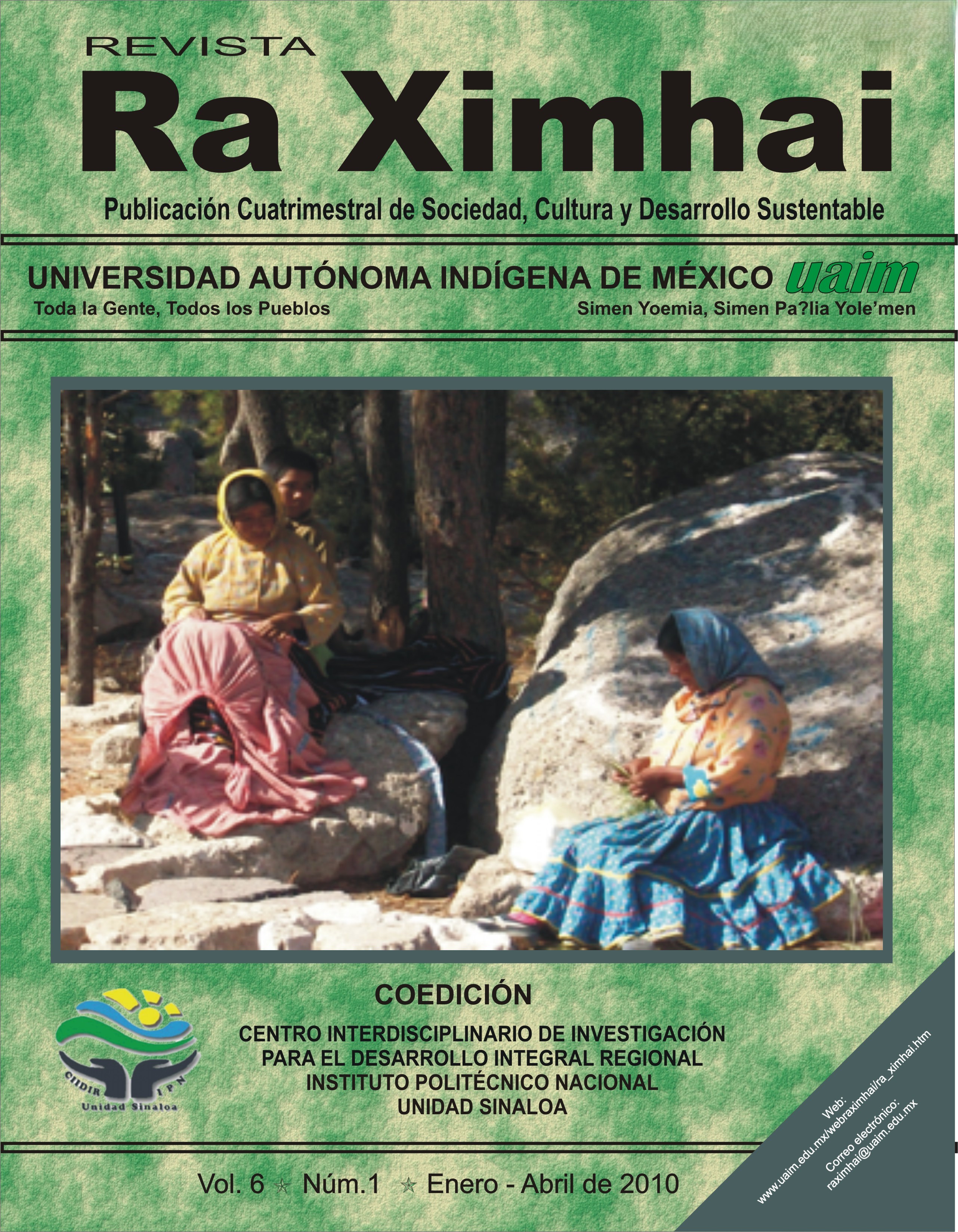Nanotecnología y nanoencapsulación de plaguicidas
DOI:
https://doi.org/10.35197/rx.06.01.2010.09.emPalabras clave:
Nanoescala, nanopartículas, nanobiotecnologíaResumen
En el presente trabajo se dan a conocer las perspectivas sobre el uso de la nanotecnología en la elaboración de plaguicidas, sus ventajas tecnológicas sobre las formulaciones actuales y sus posibilidades de uso en los esquemas de desarrollo rural sustentable. Se definen algunos términos utilizados en nanotecnología y se hace una revisión de investigaciones y empresas que participan en el desarrollo de plaguicidas micro y nanoencapsulados.
Descargas
Citas
Sandler, D., Lubin, J., Dosemeci, M., Lynch, C., Knott, C., Alavanja, M. 2005. Cancer Incidence among Male Pesticide
Applicators in the Agricultural Health Study Cohort Exposed to Diazinon. Am. J. Epidemiol. 162(11):1070-1079.
Chen, M., Von, M. A. 2005. Formation of nucleoplasmic protein aggregates impairs nuclear function in response to SiO2 nanoparticles. Experiment Cell. Res. 305:51- 62.
Garnett, M., y Kallinteri, P. 2006. Nanomedicines and nanotoxicology: some physiological principles. Occup. Med. 56:307-311.
Geiser, M., Rothen-Rutlshauser B., Knapp, N., Schurch, S., Kreyling, W., Schulz, H., Semmler, M., Im, H., Hagens, W., Oomen, A., de Jon W., Cassee, F., Sips, A. 2007. What do we (need to) know about the kinetic properties of nanoparticles in the body?. Regulatory Toxicology and Pharmacology. 49:217–229.
Grupo, E.T.C. 2004. Down on the Farm. (En línea).
Disponible en: http://www.etcgroup.org.
Grupo, E.T.C. 2005. Concentration in Corporate Power. Oligopoly, Inc. 2005. Disponible en: http://www.etcgroup.org.
Grupo, E.T.C. 2007. Extreme genetic engineering: An introduction to synthetic biology. (En línea). Disponible en: http://www.etcgroup.org/upload/publication/6 02/01/synbioreportweb.pdf
Hoet, P., Bruske-Holfeld I., Salata, O. 2004. Nanoparticles – known and unknown health risks. J. Nanobiotechnol. 2:12.
Innovest. 2006. Nanotechnology: Non-traditional Methods for Valuation of Nanotechnology Producers. Innovest. Strategic Value Advisers.
Joseph, T., y Morrison, M. 2006. Nanotechnology in Agriculture and Food. Nanoforum Report. (En línea). Disponible en: http://www.nanoforum.org/dateien/temp/nanot echnology%20in%20agriculture%20and%20f ood.pdf?08122006200524.
Li, N., Sioutas, C., Cho, A., Schmitz, D., Misra, C.,
Sempf, J., Wang, M., Oberley, T., Froines, J., Ne, A. 2003. Ultrafine particulate pollutants induce oxidative stress and mitochondrial damage. Environ. Health. Perspect. 111(4):455-460.
Limbach, L., Wick, P., Manser, P., Grass, R., Bruinink, A., Stark, W. 2007. Exposure of engineered nanoparticles to human lung epithelial cells: Influence of chemical composition and catalytic activity on oxidative stress. Environ. Sci. Technol. 41:4158-4163.
Nel, A., Xia, T., Li, N. 2006. Toxic potential of materials at the nanolevel. Science. 311:622- 627.
Oberdörster, G., Maynard, A., Donaldson, K., Castranova, V., Fitzpatrick, J., Ausman, K., Carter, J., Karn, B., Kreyling, W., Lai, D., Olin, S., Monteiro-Riviere, N., Warheit, D., Yang, H. 2005a. Principles for characterising the potential human health effects from exposure to nanomaterials: elements of a screening strategy. Particle Fibre Toxicol. 2:8.
Oberdörster, G., Oberdörster, E., Oberdörster, J. 2005b. Nanotoxicology: an emerging discipline from studies of ultrafine particles. Environ. Health Perspect. 113(7):823-839.
Petrelli, G., Figà-Talamanca I., Tropeano, R., Tangucci, M., Cini, C., Aquilani, S., Gasperini, L., Meli, P. 2000. Reproductive male mediated risk: Spontaneous abortion among wives of pesticide applicators. Eur. J. Epidemiol. 16: 391-393.
Renton, A. 2006. Welcome to the world of nanofoods. Guardian Unlimited. Reino Unido. (En línea). Disponible en: http://observer.guardian.co.uk/foodmonthly/fut ureoffood/story/0,,1971266,00.html.
Roco, M. 2001. From vision to the implementation of the US National Nanotechnology Initiative. J. Nanoparticle Research. 3:5-11.
Roco, M., Bainbridge, W. (Eds). 2002. Converging Technologies for Improving Human Performance: nanotechnology, biotechnology, information technology and cognitive science. Informe auspiciado por NSF/DOC. Disponible en: http://www.wtec.org/ConvergingTechnologies
/.
Syngenta. Sin fecha. Regulador de crecimiento vegetal Primo MAXX. (En línea). Disponible en: http://www.syngentaprofessionalproducts.com
/prodrender/index.aspx?prodid=747
Van, B. E., Font, R., Cavallé, N., Font, L., García- Villanueva, M., Benavente, Y., Brennan, P., de Sanjose, S. 2006. Exposure to non arsenic pesticides is associated with lymphoma among farmers in Spain. Occupation Environ. Med. 63:663-668.
Wolfe, J. 2005. Safer and guilt-free nanofoods. Forbes.com. EE.UU. (En línea). Disponible en: http://www.forbes.com/investmentnewsletters/ 2005/08/09/nanotechnology-kraft-hershey- cz_jw_0810soapbox_inl.html.
Descargas
Publicado
Cómo citar
Número
Sección
Licencia
Derechos de autor 2010 Eder Lugo Medina, Cipriano García Gutiérrez, Rey David Ruelas Ayala

Esta obra está bajo una licencia internacional Creative Commons Atribución-NoComercial 4.0.
Usted es libre de:
- Compartir — copiar y redistribuir el material en cualquier medio o formato
- Adaptar — remezclar, transformar y construir a partir del material
- La licenciante no puede revocar estas libertades en tanto usted siga los términos de la licencia
Bajo los siguientes términos:
- Atribución — Usted debe dar crédito de manera adecuada , brindar un enlace a la licencia, e indicar si se han realizado cambios . Puede hacerlo en cualquier forma razonable, pero no de forma tal que sugiera que usted o su uso tienen el apoyo de la licenciante.
- NoComercial — Usted no puede hacer uso del material con propósitos comerciales .
- No hay restricciones adicionales — No puede aplicar términos legales ni medidas tecnológicas que restrinjan legalmente a otras a hacer cualquier uso permitido por la licencia.








